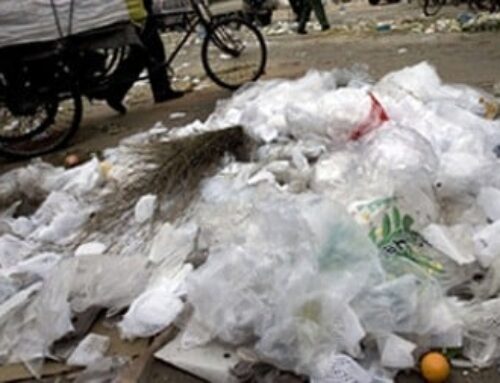Is American LNG the Only Alternative to Russian Gas?
May 25, 2025
President Trump’s prevarications on tariffs have led to widespread uncertainty, which could have far-reaching consequences for the European energy sector. Since the escalation of the Russia-Ukraine conflict, Europe’s dependence on Russian natural gas has dramatically declined, prompting increased reliance on American liquefied natural gas (LNG). However, the surefire economic chaos to come as a result of Trump’s tariff policy, Europe‘s evolving energy needs and geopolitical challenges require more comprehensive strategies than solely relying on LNG imports. It is time for Europe to diversify its energy sources, incorporating nuclear energy, renewables, and the strategic exploitation of mature gas fields.
American LNG: An Immediate Solution with Long-term Risks
In the aftermath of reduced Russian gas supplies, American LNG quickly became a lifeline for Europe‘s immediate energy requirements, alongside Norway. But this slowly began declining in 2023 and 2024, as European demand decreased. According to the U.S. Energy Information Administration, European imports of American LNG decreased by 19% in 2024 compared to 2023, mainly as a result of higher storage capabilities and a 40% growth in European LNG import capacity between 2021 and 2024. In spite of the changing dynamics of the international energy market, the U.S. nonetheless provided 45% of EU LNG imports in 2024, not an insignificant percentage, highlighting a continued reliance for European energy security.
Yet, this reliance is not without its drawbacks. LNG‘s volatility in price remains a substantial risk, exacerbated by global market fluctuations and competition, notably from Asia. Furthermore, despite Europe’s offer to buy more American gas, uncertainty remains. But early 2025 has seen European gas prices surge sharply due to colder-than-average weather and heightened international demand, underscoring the vulnerability of heavy LNG dependence. Additionally, the development and maintenance of LNG infrastructure require significant financial investments. Germany alone, for example, recently constructed multiple floating storage and re-gasification units (FSRUs), representing substantial capital expenditures.
Revisiting gas
With regards to gas, Europe is also exploring new upstream opportunities, particularly in regions like the North Sea. Countries such as Norway and the United Kingdom are assessing the potential of untapped reserves, including in offshore zones. However, while these new fields offer a chance to partially offset declining domestic production, their development is often hampered by high costs and significant technical challenges. Offshore projects, in particular, require complex infrastructure, long lead times, and face growing environmental scrutiny. These constraints highlight the limitations of depending solely on fossil fuel exploration and reinforce the urgency of a broader transition that includes both nuclear energy and renewables.
Europe does have reserves, but they are difficult and expensive to exploit, and not great from an environmental perspective — even though European legislation on the matter is very strict. A more environmentally friendly solution lies in mature wells, even if the reserves there may be smaller than those of large, still-untapped offshore fields. In this sense, another critical yet often overlooked aspect is the utilisation and revitalisation of mature gas fields, particularly across Eastern Europe. These fields offer a sustainable, economic, and environmentally responsible alternative, complementing renewable and nuclear efforts. “70% of all oil and gas production comes from mature fields… The cost of producing oil from mature assets is around $10 a barrel, in comparison with a new-field barrel that can cost much more,” according to Baker Hughes’ Mature Assets Director, Guillaume Fauchille, highlighting the economic viability of exploiting these energy sources.
The strategic exploitation of mature gas fields therefore offers Europe an effective way to supplement its energy requirements sustainably. Countries like Romania and Ukraine hold considerable potential, where mature fields, previously considered economically unviable due to cheaper imports, are now being re-evaluated. Romania, in particular, stands out with significant gas reserves and production potential. As reported by Euractiv, Ukraine similarly presents a compelling case, boasting Europe’s second-largest gas reserves after Norway. The country’s natural gas reserves are estimated at 5.4 trillion cubic metres (tcm), with proven reserves of 1.1 tcm of natural gas, more than 400 million tonnes (Mt) of gas condensate and 850 Mt of oil reserves. However, the loss of Crimea means natural gas reserve estimates must be revised downwards. But even despite the ongoing geopolitical instability, Ukrainian gas reserves represent a substantial opportunity to reduce Europe’s external dependencies.
A good example of this mature field strategy in action is Expert Petroleum (XP), which operates in both Romania and Ukraine. XP specializes in revitalizing older oil and gas fields, to increase their production and reserves using advanced technology and efficient management to boost yields. Through its XP Upgreen initiative, the company also reduces emissions and improves energy efficiency, aligning with Europe’s strict environmental legislation. According to XP Upgreen’s Managing Director, Bart Wauterickx, the EU leads globally in environmental regulation, requiring regular methane reporting and ongoing improvements—even from foreign exporters. “XP Upgreen supports Oil & Gas companies in decarbonizing their operations. When we talk about decarbonization, we address sources of emissions harmful for Global Warming and Air Pollution like carbon dioxide CO2, and more importantly, methane CH4″ explains Bart Wauterickx. The company’s model shows how mature fields can deliver both energy security and sustainability.
Exploring alternatives: Europe’s diversification imperative
Europe‘s pursuit of energy security necessitates diversifying beyond gas. Within this framework, renewable energy sources and nuclear energy stand prominently. Renewables have witnessed extensive development across Europe, with wind and solar energy capacity steadily increasing, supported by significant investments and policy support from the European Union. According to Eurostat, renewable energy sources accounted for 23% of the EU’s gross final energy consumption in 2022, with wind and solar playing a leading role. The EU’s REPowerEU plan, launched in response to the energy crisis triggered by the war in Ukraine, aims to boost the share of renewables to at least 42.5% by 2030—potentially reaching 45% under more ambitious scenarios.
In 2023 alone, Europe added over 56 GW of new renewable capacity, led by solar PV installations, which surpassed 40 GW—a 40% increase from the previous year, according to SolarPower Europe. Meanwhile, wind energy remains a pillar of clean power generation, particularly in countries like Germany, Spain, and Denmark, with the EU targeting 510 GW of installed wind capacity by mid-century. These developments reflect not only growing investment—over €180 billion in renewable energy technologies in 2023—but also a coordinated policy effort to decarbonise Europe’s energy system while reducing dependence on fossil fuel imports.
Concurrently, nuclear energy remains pivotal, with approximately 106 reactors providing almost a quarter of Europe‘s electricity in 2019 for example, according to the EU’s own statistics. Nuclear power is expected to retain a central role in Europe’s decarbonisation strategy. Several countries, including France, Poland, and the Czech Republic, have announced plans to build new nuclear reactors or extend the life of existing ones. The European Commission’s inclusion of nuclear in its taxonomy for sustainable investments reflects this long-term vision. By 2050, the share of nuclear in Europe’s electricity mix is projected to remain significant, especially as advanced reactor technologies, such as small modular reactors (SMRs), begin to be deployed. These projects aim to ensure stable base-load power while complementing the intermittent nature of renewables, contributing to a resilient, low-carbon energy system across the continent.
The Future Lies in Diversity
While renewables and nuclear power are central to Europe’s long-term energy strategy, they each face inherent constraints—intermittent supply from renewables and extended lead times for new nuclear projects. In this context, mature gas fields offer a reliable transitional solution. Their ability to deliver consistent output and respond quickly to market demands makes them a valuable complement to intermittent or long-to-deploy energy sources.
To build a resilient and sustainable energy future, Europe must adopt a multifaceted strategy. This means not only continuing to import American LNG as a short-term buffer but also making strategic use of existing mature gas assets. When combined with investments in renewables and the sustained operation or expansion of nuclear power, mature gas field development reinforces energy stability, reduces geopolitical exposure, and supports the continent’s environmental commitments.
[Photo: AGA’s LNG terminal in Nynäshamn, Sweden, Jan Arrhénborg / AGA, CC BY-SA 3.0, via Wikimedia Commons]Severin Meyer, trained in political science and international relations, worked as a defense civil servant before becoming a freelance consultant for European defense industries. He focuses on Central and Eastern Europe and transatlantic cooperation. The views and opinions expressed in this article are those of the author.
Search
RECENT PRESS RELEASES
Related Post



